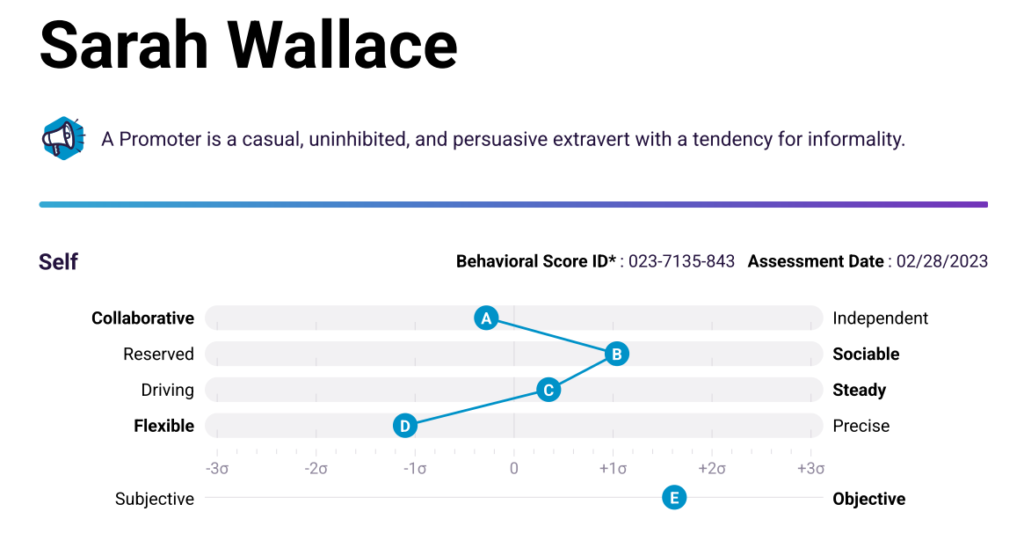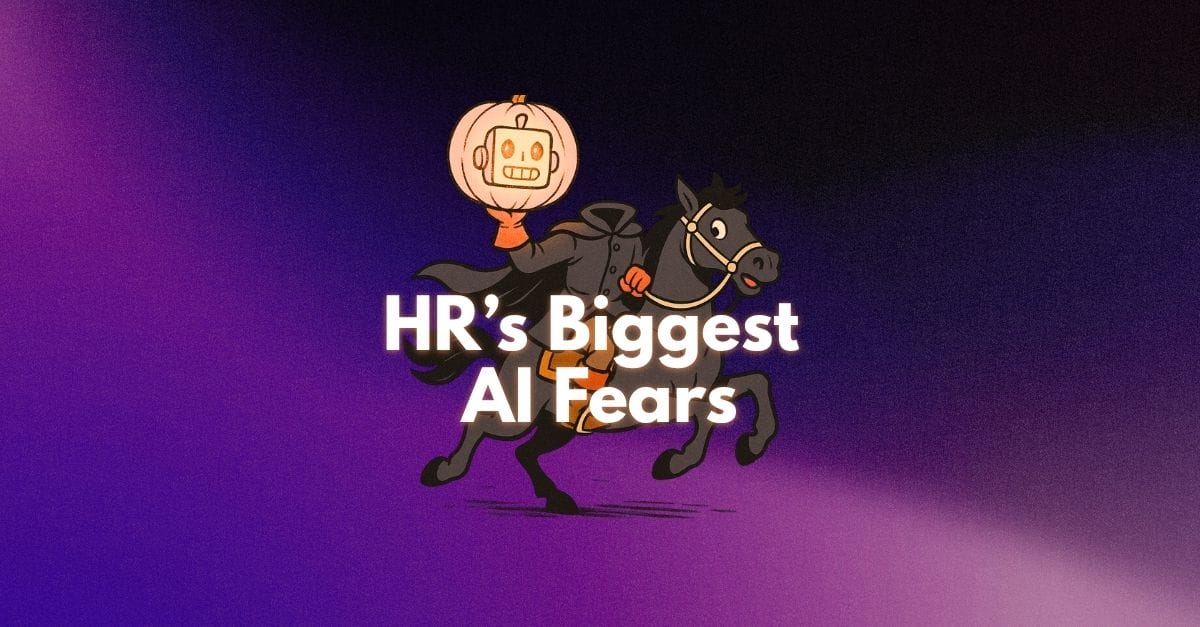Ever wish your life or job had a hype-person? Someone who “gets” what you’re about, supports what you’re trying to achieve, and is the first to celebrate your latest milestone?
My name is Sarah, and I am a Promoter. Here at The Predictive Index, I head up the Growth Marketing team, which affords me plenty of opportunities to tout the excellence of both our product and people. If you’ve ever come across PI content on LinkedIn, Meta, YouTube, or any of the other many channels we use as growth levers, there’s a good chance my team worked on it.
But more on myself in a bit! First, let’s talk about my behavioral profile.
My behavioral pattern
I first took the PI Behavioral Assessment in 2023 when I applied to work at PI.
The assessment reveals a person’s natural workplace behaviors according to four key drives:
- Dominance – the drive to exert one’s influence on people or events
- Extraversion – the drive for social interaction with other people
- Patience – the drive for consistency and stability
- Formality – the drive to conform to rules and structure
Here are my results:

Unfamiliar with PI? This graph is what our employees and clients refer to as a Behavioral Pattern. Each dot maps back to one of the four drives: The farther right it is, the higher that drive; the farther left, the lower it is. If the dot is right in the middle, it means that drive is “situational” and may lean in either direction depending on the context of the work.
All patterns are beautiful—and higher does not mean “better.” Instead, we use this behavioral data to understand how we’re different from (or similar to) our peers, so we can find new ways to communicate, collaborate, and support one another.
If you’re feeling a little lost in the science, no worries. With PI, every specific Behavioral Pattern maps back to one of 17 Reference Profiles. Think of your pattern as your home address, and your profile as your zip code! By understanding Reference Profiles, you can understand any colleague, manager, or direct report at a glance.

Give managers the tools they need to drive performance
The all-in-one platform for managing meetings, feedback, goals, and employee recognition, supercharged with behavioral insights.
My Reference Profile is a Promoter.
A Promoter is a charismatic, persuasive, and encouraging extrovert known for being supportive, harmonious, and diplomatic.
I find my Promoter Reference Profile description to be spot on in terms of how I work. I love talking ideas out loud in meetings and getting input from others while helping guide the group to a solution that works best for everyone.
One of the greatest strengths of a Promoter is the ability to elevate the ideas of colleagues who may be more reserved in larger group settings. This collaborative approach ensures that every voice is acknowledged and appreciated.
My profile also helps me be more conscious of some of my caution areas. For example, I’m aware that I can sometimes lack attention to detail, particularly when talking about a large project with many moving pieces. In these moments, I try to remind myself to “stretch” my formality (D) drive and keep those details in mind.
Promoter perceptions versus reality
On paper, a Promoter is a collaborative, friendly, and relatively informal member of the team, with a tendency toward diplomacy and persuasiveness. Overall, I feel my Reference Profile is an accurate representation of my natural drives and behaviors in the workplace.
However, as with all profiles, certain Promoter attributes are nuanced. Those attributes may manifest differently at work, depending on what the situation calls for, as well as the other colleagues involved and their complementary behaviors. For example:
Collaborative could mean:
- We value your ideas and ours equally.
- Let’s work together to find common ground.
Informal could mean:
- Human and approachable leadership
- Creating a space for open expression and better teamwork
Flexible could mean:
- Welcoming experimentation and calculated risks
- Creating room for new ideas to take shape
Patient might mean:
- Prioritizing thoughtful, long-term strategy over impulsive or inconsistent decisions
- Taking the time to get to know others

Embracing my superpowers
A Promoter’s greatest superpower is the ability to amplify the ideas of the people around them—especially those who might be less likely to speak up otherwise. When a Promoter is in the room (or Zoom), you’re getting an extravert with a natural ability to energize and encourage others. If you need that spark for a team or project, we’re there!
Promoters tend to be flexible (low D drive) and relatively patient, making us easy co-workers to get along with. Our most prominent drive is our extraversion (B) drive which, combined with our situational C, means we can connect with nearly anyone, and do so quickly.
So, whether you’re looking for someone to help initiate conversations, champion ideas, or celebrate wins, give us a microphone and we’ll gladly jump in.
Understanding my caution areas
Promoters do their best work in open, collaborative environments. The tradeoff is that in high-pressure situations with rigid structures and competing demands, we sometimes feel scattered – unless we apply intentional focus.
In leading large projects, my instinct is to emphasize flexibility and trust. That can mean I’m less likely to impose rigid structure by default. I’ve come to recognize that while autonomy fuels creativity, teams also need clarity—so I challenge myself to add in just enough structure to keep us aligned and moving forward.
By understanding my Reference Profile, I’m able to leverage my natural superpowers, shore up potential gaps, and continually add new knowledge to my behavioral toolkit.
How to work with a Promoter
I’ve never met a Promoter who wasn’t open to having an informal conversation with you immediately, no matter the situation. I’m no different in that regard. If a colleague has a work question or just wants to chat with me about their weekend plans, I’m pretty much all ears with little notice. I love informal chats and working collaboratively. Be prepared to bring the energy and the optimism, and we’ll reciprocate wholeheartedly.
How to manage a Promoter
As someone with low formality, I like to have relative freedom and autonomy when working. But that’s not to say I’m a lone wolf. I have a situational dominance (A) drive, meaning I may be more independent or collaborative depending on the situation. Of course, with my high B drive, I also enjoy check-ins with my manager, especially when those conversations are more casual.
Despite my preference for flexibility at work, I do enjoy it when my manager can come up with a few agenda items—both to keep us on topic and to create space for more structured feedback. Although adhering to structure and routine may be a slight stretch for a Promoter’s D and C drives, doing so can help bring balance to the Reference Profile and yield great results.
Which Reference Profile are you?
Want to learn your own PI Reference Profile? Take the PI Behavioral Assessment and discover your natural behavioral strengths and caution areas. It’s free—and it takes just six minutes!








